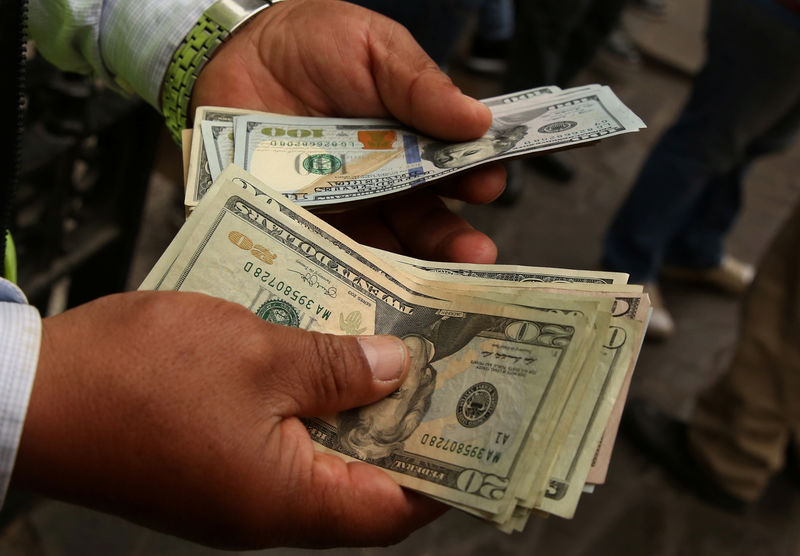 © Reuters. A money changer holds U.S. dollar bills at a street in downtown Lima
© Reuters. A money changer holds U.S. dollar bills at a street in downtown LimaBy Jemima Kelly
LONDON (Reuters) – The dollar slipped to its lowest in more than three months against a basket of major currencies on Friday as the euro and sterling climbed, putting the greenback on track for an almost 10 percent fall over the year – its worst showing since 2003.
The dollar started 2017 on a high, with the index that tracks it against a basket of six major currencies () hitting its strongest in 14 years on hopes that new U.S. president Donald Trump would implement pro-growth, pro-inflation measures.
But it has fallen back on doubts about Trump’s ability to push through those policies. And it has also lost out as growth has picked up outside the United States, with other countries’ central banks moving toward tighter monetary policy, lessening the gap between the Federal Reserve and others.
“We are seeing synchronized global growth, in particular a very strong growth recovery in the euro area, which is leading the ECB (European Central Bank) to gradually normalize policy, which is helping the euro,” said Societe Generale (PA:) currency strategist Alvin Tan.
Tan added that the dollar had become overvalued against the euro, yen and sterling at the start of the year and so another part of the reason for its weakness in 2017 was a mean reversion in valuation.
The euro, which hit a three-month high of $1.1982
The common currency showed little immediate reaction to Italy’s announcement that it will hold an election on March 4, as such an outcome had been anticipated.
Although sterling is still more than 10 percent down against the dollar since the June 2016 vote for Britain to leave the European Union, it has climbed 9.5 percent in 2017 – its strongest year since 2009
On Friday sterling climbed half a percent to a three-week high of $1.3511.
Shin Kadota, senior strategist at Barclays (LON:) in Tokyo, said rebalancing of positions by market participants signaled broad selling of the dollar, particularly the yen, toward the year’s end.
“Seasonal trends in the currency market have shown that the dollar tends to weaken after Christmas through the first few days of the following year before eventually being bought back again,” he said.
Many institutional investors close their books at the year-end, a deadline for taxation and performance reporting, a time seen leading to dollar selling pressure.
The dollar was 0.3 pct lower at a ten-day low of 112.56 yen
was flat on the day at $14,500 () on the Bitstamp exchange, having sunk 6 percent on Thursday. It was off the record highs near $20,000 touched 12 days ago but still headed for a gain of roughly 1,400 percent in 2017.
Fusion Media or anyone involved with Fusion Media will not accept any liability for loss or damage as a result of reliance on the information including data, quotes, charts and buy/sell signals contained within this website. Please be fully informed regarding the risks and costs associated with trading the financial markets, it is one of the riskiest investment forms possible.
Source: Investing.com




























